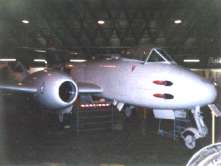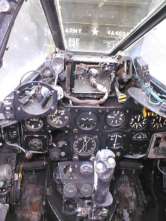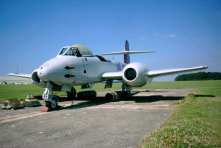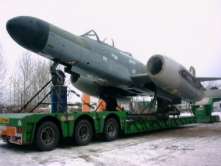The first allied jet fighter, the
Meteor saw some action in the closing stages of World War
2 and continued to play an important role thereafter. The
initial version, the Mk.1, was not much more than a proof
of concept machine, albeit used operationally. 20 were
built during 1944.
The Mk.2
did not make it beyond the prototype stage, but the
improved Mk.3 was already a more potent war machine,
thanks to the experience gained with its predecessors.
210 were built between 1945 and 1947, most with the
characteristic stubby engine nacelles but some had the
more streamlined long nacelles.
With jet
engine technology progressing rapidly, the more powerful
F.4 became a truly fast aircraft, beating the world speed
record on several occasions. Built from 1946 on, 658
entered RAF service. The F.4 also turned out to be a
succesful export product for the English manufacturer,
with aircraft sold to the air forces of Argentine,
Belgium, Holland, Denmark and Egypt.
With
several air forces converting to jet power the need for a
2-seat trainer became very real, so Gloster privately
developed the T.7. With 712 examples built, one can
fairly say that the Gloster people had it quite right !
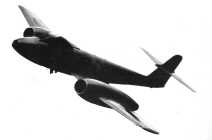 Up
to this point, the Meteor had always suffered from some
instability problems. With the advent of the F.8, this
was cured. With a new enlarged tail section, both
stability and streamlining improved. No less than 1183
examples left the production halls, with deliveries to
the most diverse air arms. Up
to this point, the Meteor had always suffered from some
instability problems. With the advent of the F.8, this
was cured. With a new enlarged tail section, both
stability and streamlining improved. No less than 1183
examples left the production halls, with deliveries to
the most diverse air arms.
Matching
the fighter version, 2 reconnaissance variants were built
: the FR.9 (Fighter-Reconnaissance - 126 examples) and
the PR.10 (Photographic Reconnaissance - 58 examples).
The larger
tail of the F.8 version proved so good, that several
T.7's were modified in the field with F.8 tails, thus
creating the unofficial T.7 1/2.
During 1948
Gloster started development of the night fighter NF.11
version, which was ultimately built by
Armstrong-Whitworth. The 335 NF.11's were followed by 100
similar but electronically updated NF.12's and 40 NF.13's
( a tropicalized NF.11 version).
The end of
the production line was heralded by the more streamlined
NF.14, 100 of which were built.
After the
closing down of the production lines, several modified
versions saw the light of day. Some were converted into
pilotless drones for guided arms trials under the
designation U.19.
|
